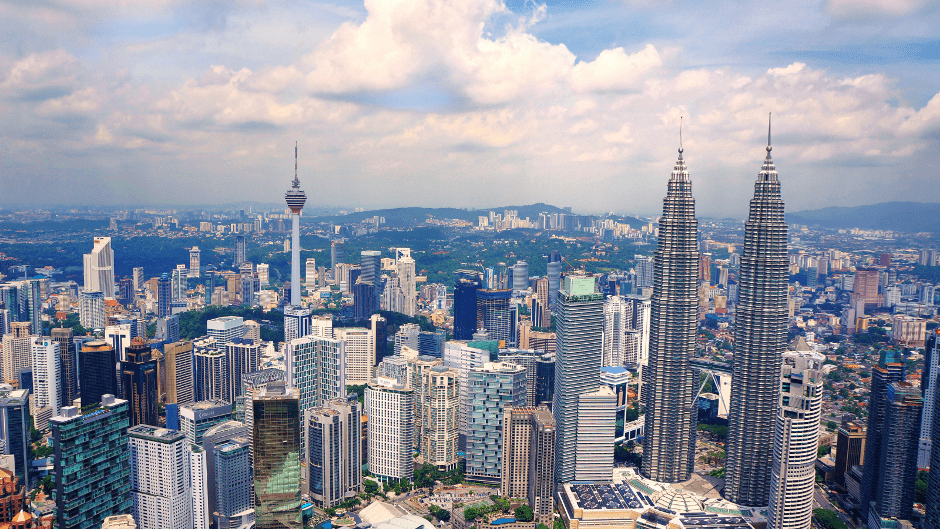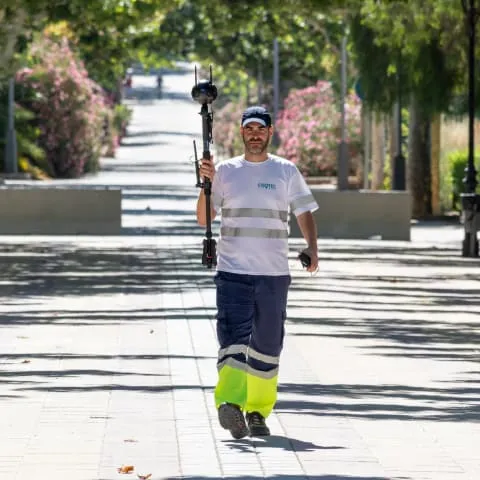
Using artificial vision to improve the efficiency of smart cities
As you will remember, a few weeks ago we dedicated an article to explaining what artificial vision is and what some of its applications are. However, there are still many questions that we will be gradually unravelling in this and subsequent publications.
Yes, artificial vision is a branch of artificial intelligence that focuses on the processing and analysis of digital images and videos. But we could say that it is much more, thanks to the countless advantages offered by this solution to make smart cities more efficient urban fabrics. All this thanks to the increasing availability of cameras, image capture and object recognition devices.Do you want to know how this tool helps to improve urban efficiency, what are its most outstanding applications and advantages and some examples of urban projects in which we are using artificial vision systems? Read on, read on.
Growth and needs of cities
The growth of cities is a global trend that has accelerated in recent decades, driven by urbanisation and population growth. But not only that, as this progressive and rapid growth presents significant challenges in terms of infrastructure, transport, energy, security and environment.
Fortunately, technology, and more specifically, artificial vision can play an important role in addressing these challenges and making cities more liveable, sustainable and efficient environments.
Demographics and environment
Demographic growth and environmental protection are two major challenges facing our planet today. How can this context be addressed? By understanding artificial vision as a tool capable of protecting and conserving the environment.
Artificial vision applications in cities
Which applications of artificial vision have a key role to play in environmental conservation and, consequently, in the sustainable management of cities and municipalities?
One of the biggest environmental challenges facing humanity is climate change. Artificial vision can be used to monitor changes in vegetation cover and air quality, and to identify areas with high greenhouse gas emissions. By using this technology, it is possible to know how climate change is affecting our planet and how we can act to mitigate its effects.
And we continue, because this solution can also be used to manage population growth and urbanisation, both of which have a negative impact on the environment. Just one example: artificial vision algorithms can be used to optimise urban waste management, reducing the amount of waste that ends up in landfills.
Or one more! There is artificial vision software that also favours the monitoring of endangered species. How? Through drones equipped with cameras and artificial vision algorithms that fly over remote areas to identify and track these animals, allowing the collection of accurate, real-time information on their behaviour and habitats, helping in the planning of more effective conservation programmes.
Examples of urban projects that have made use of artificial vision
One of the most prominent artificial vision projects is the use of surveillance cameras equipped with facial recognition software in the city of Shenzhen, China. With a population of more than 12 million, Shenzhen has implemented a surveillance system that uses facial recognition technology to track people suspected of committing crimes. The system is able to identify people in real time and alert security authorities to any suspicious activity.
Another example of how artificial vision is transforming cities is the use of smart sensors in the public transport system in Madrid, Spain. The sensors are located in metro stations and use artificial vision technology to measure people density and predict future demand. This allows transport authorities to optimise train schedules and improve the efficiency of the transport service.
In New York, the LinkNYC project is using artificial vision technology to create a network of public internet access kiosks. The kiosks are equipped with cameras that use artificial vision technology to analyse street activity and improve neighbourhood safety.
Advantages of using artificial vision to manage smart cities
What advantages does artificial vision offer in the maintenance and management of smart cities? The first and fundamental one is none other than improving the quality of life of citizens, but in what way?
- Increased security, with cameras equipped with artificial vision capable of detecting and analysing risk situations in real time, such as traffic accidents, fires or criminal acts.
- Traffic control, by analysing vehicle movement patterns, enabling efficient traffic light management and alternative route planning in case of congestion.
- Improving energy efficiency, by controlling energy consumption in public and private buildings, through automatic detection of people in a room, to adjust lighting and air conditioning and save resources.
- Waste management, through cameras that detect the accumulation of waste in containers and streets, allowing more efficient management of cleaning services.
Fisotec’s urban breakthroughs in artificial vision
And if there is a company with artificial vision as an ally, that is Fisotec, because we are not only pioneers with indiva SaaS in the development of software that favours the management, maintenance and saving of resources in urban environments.
Thanks to our 360º multi-lens camera, we can carry out inventories of urban services with which we can go one step further in the detection of entities. How? By using complementary detection algorithms based on GIS and positioning software to identify the location and type of entity we are analysing, but also its state of conservation, whether it has suffered a blow, if there is interference on the road or if there is a risk of breakdown.
